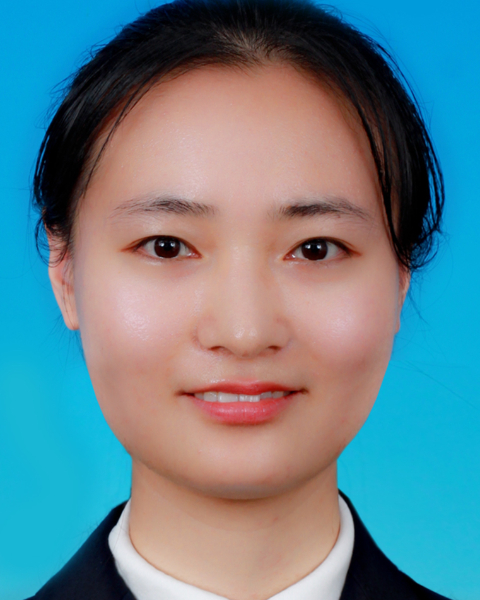PQA 02 - PQA 02 Physics Poster Q&A
2454 - Accelerated High-Resolution Monte-Carlo Dose Calculation by a Patient-Specific Deep Learning Image Super-Resolution Framework
Sunday, September 29, 2024
4:45 PM - 6:00 PM ET
Location: Hall C
Screen: 31

Siqi Ye, PhD
Stanford University
Palo Alto, CA
Presenter(s)
S. Ye1, S. Liu2, Y. Gao2, and L. Xing2; 1Department of Radiation Oncology, Stanford University School of Medicine, Stanford, CA, 2Department of Radiation Oncology, Stanford University, Stanford, CA
Purpose/Objective(s): Monte Carlo-based dose calculation algorithms are frequently used in radiation therapy treatment planning systems. However, the dose calculation time increases significantly with higher dose resolution. We propose a workaround for high-resolution (HR) dose calculation by initially computing low-resolution (LR) dose distributions and then enhancing their resolutions using an efficient and patient-specific deep learning (DL) super-resolution (SR) technique. This approach could reduce the computational overhead of dose calculation throughout the treatment planning pipeline, thereby improve the treatment planning efficiency. Materials/
Methods: We developed an efficient and patient-specific DL approach for image SR. Based on the hypothesis that an LR image is a blurred and downsampled version of the underlying HR image, we proposed to utilize two implicit neural representation (INR) networks, the Image-INR and the Blur-INR, to learn the target HR image and the blurring kernel, respectively. Both INR networks are constructed as coordinate-based multi-layer perceptrons (MLPs), with spatial coordinates of the object as inputs and pixel intensities as outputs. In addition, we hypothesized that the blurring kernel across different resolutions are scaled versions of the output of the Blur-INR, and the learned kernel satisfies the non-negative and energy-limited constraints. We selected a SBRT plan from the MRIdian MRgRT system for evaluation. Two LR dose distributions of a patient calculated by the MRgRT system with resolutions of 4mm and 2mm were utilized for network training. The SR dose distribution of 1mm resolution was obtained at the output of trained Image-INR. We assessed the image quality by comparing the SR image with the 1mm dose map recomputed from the MRgRT system, using the peak signal-to-noise ratio (PSNR) and the structural similarity index measure (SSIM) metrics. Higher values of these metrics indicate better image quality.
Results: The MRIdian MRgRT required approximately 25 seconds and 5.5 seconds to generate dose distributions at resolutions 2mm and 4mm, respectively. Our approach enabled HR dose calculation at any user-defined resolution, including 1mm, within milliseconds with the trained network. This stands in contrast to the approximately 3 minutes required to generate a 1mm resolution dose map using the MRgRT system. Compared with a conventional bicubic interpolation method, our approach provided an increase of 2dB in PSNR and 0.003 in SSIM, and resulted in improved the visual quality with shaper textures in the dose map.
Conclusion: This work proposes an efficient HR dose calculation strategy via a patient-specific deep learning framework trained with only two LR dose maps of the same patient acquired at low computational cost. The accelerated HR dose calculation could potentially accelerate the treatment planning pipeline.
Purpose/Objective(s): Monte Carlo-based dose calculation algorithms are frequently used in radiation therapy treatment planning systems. However, the dose calculation time increases significantly with higher dose resolution. We propose a workaround for high-resolution (HR) dose calculation by initially computing low-resolution (LR) dose distributions and then enhancing their resolutions using an efficient and patient-specific deep learning (DL) super-resolution (SR) technique. This approach could reduce the computational overhead of dose calculation throughout the treatment planning pipeline, thereby improve the treatment planning efficiency. Materials/
Methods: We developed an efficient and patient-specific DL approach for image SR. Based on the hypothesis that an LR image is a blurred and downsampled version of the underlying HR image, we proposed to utilize two implicit neural representation (INR) networks, the Image-INR and the Blur-INR, to learn the target HR image and the blurring kernel, respectively. Both INR networks are constructed as coordinate-based multi-layer perceptrons (MLPs), with spatial coordinates of the object as inputs and pixel intensities as outputs. In addition, we hypothesized that the blurring kernel across different resolutions are scaled versions of the output of the Blur-INR, and the learned kernel satisfies the non-negative and energy-limited constraints. We selected a SBRT plan from the MRIdian MRgRT system for evaluation. Two LR dose distributions of a patient calculated by the MRgRT system with resolutions of 4mm and 2mm were utilized for network training. The SR dose distribution of 1mm resolution was obtained at the output of trained Image-INR. We assessed the image quality by comparing the SR image with the 1mm dose map recomputed from the MRgRT system, using the peak signal-to-noise ratio (PSNR) and the structural similarity index measure (SSIM) metrics. Higher values of these metrics indicate better image quality.
Results: The MRIdian MRgRT required approximately 25 seconds and 5.5 seconds to generate dose distributions at resolutions 2mm and 4mm, respectively. Our approach enabled HR dose calculation at any user-defined resolution, including 1mm, within milliseconds with the trained network. This stands in contrast to the approximately 3 minutes required to generate a 1mm resolution dose map using the MRgRT system. Compared with a conventional bicubic interpolation method, our approach provided an increase of 2dB in PSNR and 0.003 in SSIM, and resulted in improved the visual quality with shaper textures in the dose map.
Conclusion: This work proposes an efficient HR dose calculation strategy via a patient-specific deep learning framework trained with only two LR dose maps of the same patient acquired at low computational cost. The accelerated HR dose calculation could potentially accelerate the treatment planning pipeline.
